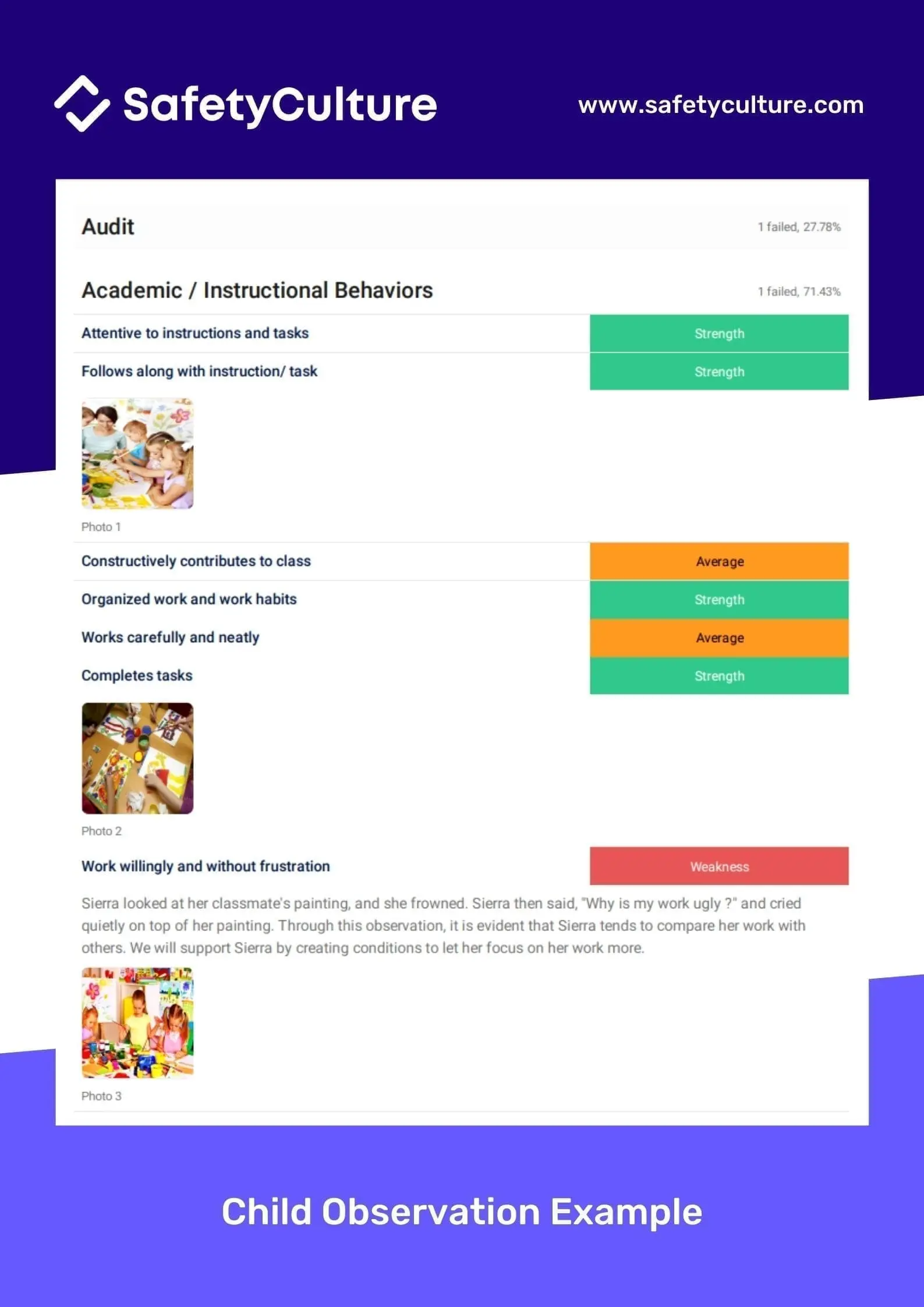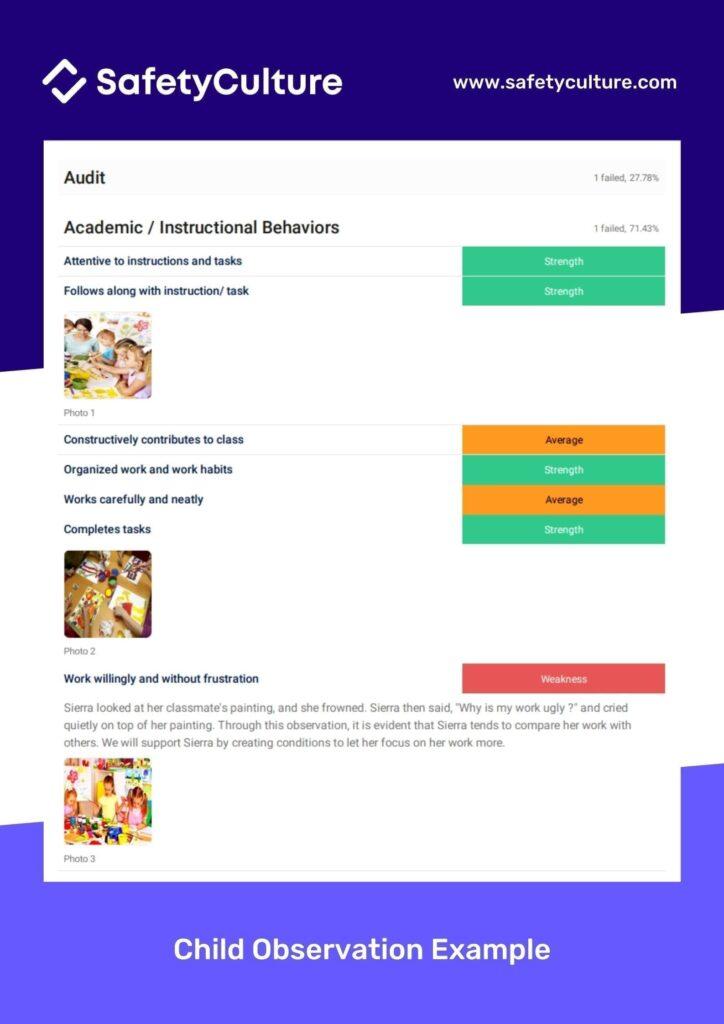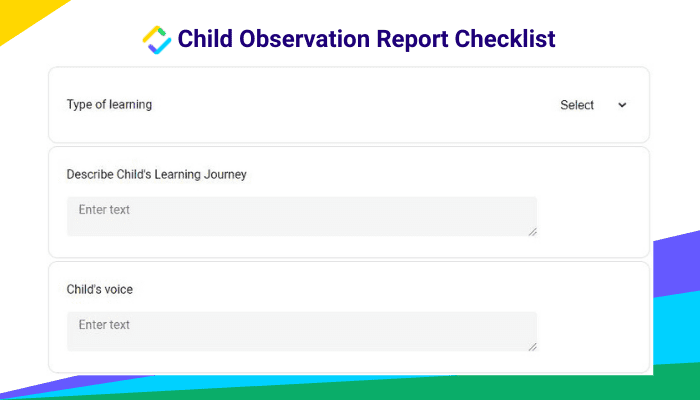What is Child Observation?
Child Observation is the method of watching, listening, asking questions, documenting, and analyzing the observed words and actions of children as they interact with their surroundings and other people. Proper observation in childcare is crucial in helping educators and parents address the needs of early childhood development.
The intention should be clear before you begin with child observation:
- Is it to come up with an action plan with the parents to help improve their child’s behavior?
- Is it to document a child’s milestone or learning progress?
Do you want the parents to see their child’s new skill as demonstrated in the creation of an artwork? - Is it to closely track a child’s language development?
When you begin with the end in mind, you can better prepare for the child observation and choose the most helpful observation method/s.
This article will briefly discuss the importance of child observation in early childhood, methods for observing children, situational examples of child observation reports, and information or details that are typically included in the observation report. We’ll also recommend some helpful tools that educators in learning centers can use for their daily child observation reports.
Why is Observation Important in Early Childhood?
Observation in childcare is vital in discovering and better understanding the strengths and weaknesses of each child. It’s an important element in the creation of an accurate and actionable child observation report, which will, in turn, help tailor the childcare environment to further facilitate learning.
Exploration and learning are the cornerstones of early childhood education, and a child observation report will help in meeting the developmental requirements of preschool children and other young learners. For child educators and care providers, child observation may be the simplest and most effective way to assess young children’s development.
Observation in child care begins with observing child behavior, learning progress, and interaction with others and to unfamiliar situations. This information is later used to determine ways to improve the learning environment.
What are the Different Child Observation Methods?
A child observation report should be based on what was actually seen and heard and should be as detailed as possible. Here are some child development observation examples to help you document and meet the purpose for observing the child:
- Anecdotal Records – this method involves factual accounts of events that should answer the possible what, when, and where questions of parents or guardians. Anecdotal Records are written in the past tense and includes what the child had said and done during an event. The documentation should also include other non verbal cues like body language and facial expressions. It should also describe the child’s reaction and behavior during an event.
- Running Records – you note down what you see and what the child says while it is happening. This method of observation should be written in the present tense and include as much detail as possible.
- Learning Stories – this is the method of telling a story about the child (or a group of children) and the child’s decisions and the events or scenarios that followed because of those decisions. Can be one short paragraph or more than a whole page depending on the story.
- Time Samples – a method of recording observations on the child’s behavior and what the child is doing at specific times. This can be done at regular intervals and can be a useful method to help identify and reduce the child’s negative behavior by understanding the context surrounding the situation.
- Jottings – literally jotting down brief sentences detailing important events, behaviors, or conversations. This can be done together with other observation methods in childcare: Work Samples and Photographs.
- Work Samples – these are the child’s paintings, clay figures, drawings, cutouts, writings, and other creations. Educators can provide descriptions based on jotted down notes narrating what the child may have said or done surrounding these work samples.
- Photographs – parents love seeing pictures of their children so how best to describe what’s going on while they’re away than with images of their child in action. Add annotations on photographs to give a description about what was taking place when the image was taken.
When documenting child observations be careful to note what you actually observe, what you see and hear exactly. Be objective and always be factual. The information gathered during child observation should serve the intended purpose you have set from the beginning and can help with the needs of early childhood development.
Child Observation Examples
Completing a child observation report can seem to be a daunting task at first, but armed with the basic child observation techniques, educators can come up with comprehensive reports of children observations. To help you get started, here are a few examples of child observations, or documenting children’s learning, based by the Family Day Care Association Queensland (ConnectFDC):
- “Hannah walked towards the climbing frame. She placed her foot on the first step then stopped. Tom, Jake and Beth lined up behind her. She stood back and waved them on. “You go,” she said. When they had passed she stepped up again but backed away when more children arrived for their turn at the climbing frame. Hannah stood at the base of the frame for a moment and looked toward the painting easels. She walked towards them.”
- “As Sierra enters the play room, she places her left hand on the gate and looks around the room. Turning to her right she lets go of the gate and walks over to home area. She bends over and picks up a small doll with her right hand saying ‘Baby.’ Sierra then turns around as she continues to hold the doll in her right hand. She walks across to the toy trolley.”
- “When Tim arrived today he proceeded straight to the book corner again. Michael (6.5 yrs) and Greg (7 yrs) were already sitting on the cushions, reading and laughing. Tim hesitated as though he was reluctant to go into the area. He chose a book off the shelf and took it to a spot on the edge of the mat. He didn’t acknowledge the other boys that were present.”
- “During this time sample period, Ben demonstrates a high level of non-play. Ben’s emotional dispositions appear to be that he is tired and needs to feel a sense of secure attachment to familiar objects. Ben is using non-verbal communication to express his need for comfort and reassurance.”
- “Blair demonstrates a learning disposition of creativity and imagination. Blair shows fine motor control when using the string and wool for painting. He is also able to clearly express his own experiences of camping through language and visual arts.”
Create Your Own Child Observation Checklist
Eliminate manual tasks and streamline your operations.
Get started for FREEWhat is Included in a Child Observation Report?
The details in a child observation report depend on what type of reporting format is required by the educational institution or what type of observation method or technique was used by the educator upon observing children. Generally, a child observation report should include:
- Contextual Information – the date, time, and setting, or location of the child, when the observation was carried out
- Observation (Data Collection) – the objective and descriptive paragraph(s), explaining what the educator observed about the child
- Interpretation (Data Analysis) – the analytical and science-based discussion of the observation, aiming to elaborate on the implications of what was observed about the child
- Recommendation – the practical course of action that should be taken in order to improve the learning and development outcomes of the child
The Power of Training in Conducting Child Observation
Creating a strong culture of quality and safety in the workplace is more than just establishing a clear set of work instructions for conducting effective child observation sessions. It’s about making sure that your workforce understands those guidelines, so they can get the job done right without putting themselves, their colleagues, and children at risk. Training can help you do just that.
A good and effective child observation training can help communicate to your workers the importance of following their work instructions. It can take them through the step-by-step process of how to carry out their tasks safely and effectively, bringing everyone on the same page when it comes to the effective implementation of best practices.
SafetyCulture (formerly iAuditor)’s Training is one tool you can use to create and deploy training courses and programs to your employees. Using Training, ensure they follow best practices and standardize how they conduct child observation sessions.
You can also make training courses accessible to your team using their preferred devices. With Training’s offline access, they can brush up on guidelines even without an internet connection.
How Do You Write a Children’s Observation with SafetyCulture?
Why use SafetyCulture?
To aid you with documentation and child observation reports, you can:
- use SafetyCulture on your iPad, tablet, computer, or mobile device to capture photos of fleeting moments and quickly annotate to describe what you saw and heard;
- use the Scheduling feature to time your observations with scheduled events like playtime and art sessions. With the app’s cloud-based storage (unlimited use if you subscribe to Premium), you can be sure that child observations are secure and only accessible to educators who are given permission to access;
- leverage the Training feature to ensure educators are well-knowledgeable and skilled to come up with child observation reports; and
- use our collection of carefully created childcare forms and templates for their observations and generate reports on the spot. Reports can easily be sent to parents with the touch of a button, saving time and effort that could be better spent on interacting with children.





